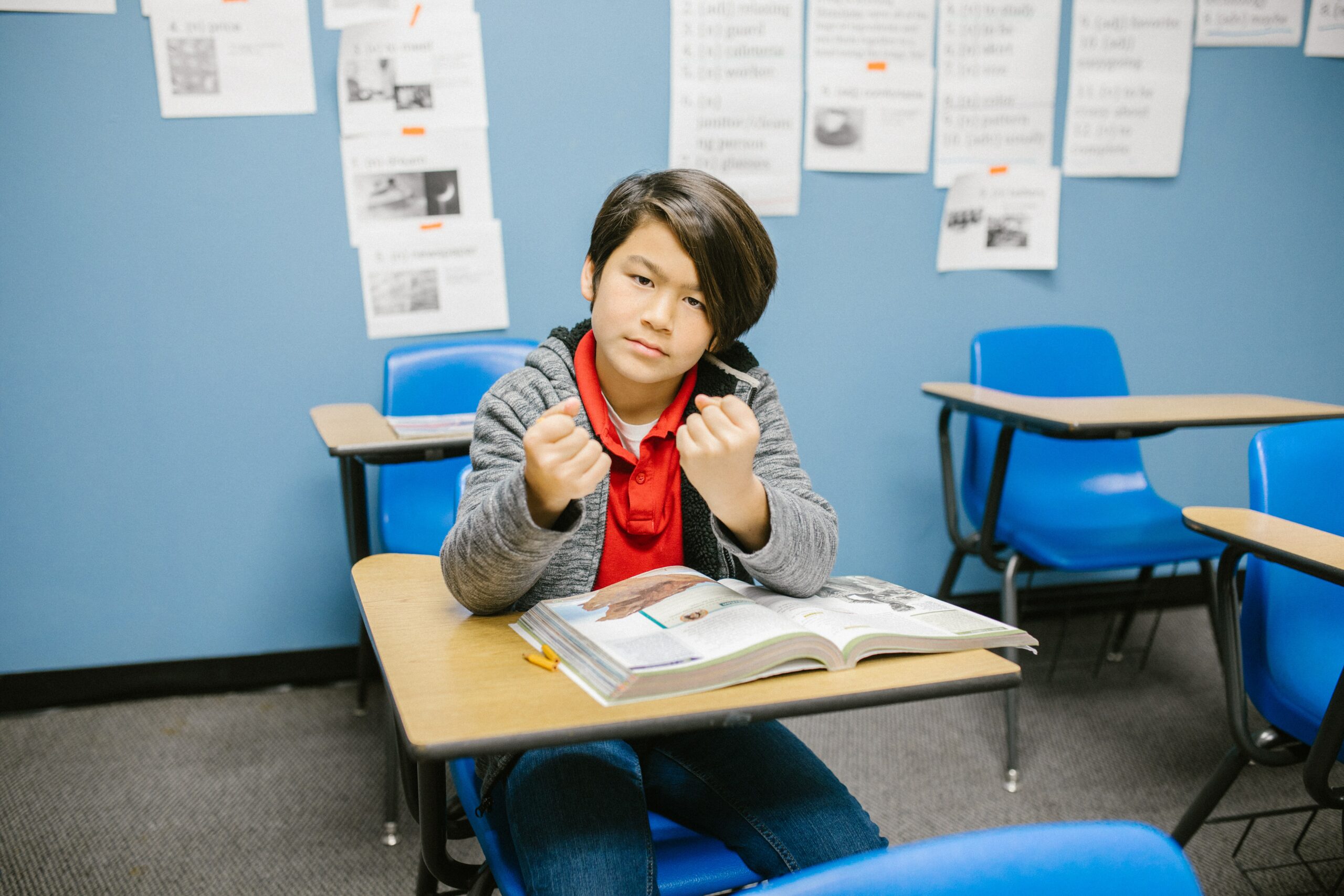If you are raising an anxious teen, first, my heart goes out to you. Parenting anxious kids requires one of the finest balancing acts in that parents must constantly ask themselves “Does my child need comfort or pushing in this moment?” “Should I accommodate the anxiety or make her face the music?”
What is the anxiety response?
Kids with chronic anxiety often sense threat where it doesn’t really exist, or where it exists on a small scale, but their minds and bodies respond in a large-scale way. The anxiety response exists to keep humans alive. When we sense danger, our bodies have some pretty amazing ways of preparing us to flee from said danger or confront it. Our breathing becomes more shallow to prep us for intense physical activity such as running away; our core becomes warm; we might start sweating; our blood pressure rises; blood rushes to our butt and thighs to give oxygen to the muscles that will help us run away. Our digestion shuts down (so we don’t have to stop for a snack or a bathroom break in the event we need to flee quickly). And we stop being able to think expansively or creatively. Instead, our focus narrows, and our thoughts become centered on “getting away from this terrible thing”, whatever the thing may be. This is a fantastic mechanism if we really encounter a situation that could hurt us.
When anxiety stops being a helper and starts to impair functioning
But when kids and adolescents start experiencing high levels of anxiety about situations that are NOT actually life-threating (ex. school, participation in sports practice, attendance at social events, or making a mistake), they might start to withdraw from areas of life that are meant to be fun or growth-oriented.
When anxiety wins and kids don’t engage in whatever task was feeling scary, kids may feel some relief in the moment, but later shame for not being able to confront their fears. And that shame can ultimately compound the anxiety. A nasty cycle.
So how can a parent help break the cycle?
- Adopt a bravery lifestyle in your household and model doing what I call “small brave things”. Let’s say there’s something you would like to do or try, but you have some nerves around that thing. For example, you’d like to try a yoga class but you’ve never done yoga before, so you’re a little nervous. Talk about those nerves with your child, then do the thing anyway! Sign up for that class, and attend. And talk with your child afterwards about how proud you are of yourself for taking the risk and all the benefits you gained from facing your fear.
- Normalize mistake-making. Kids with anxiety can sometimes be afraid to fail. It’s important, therefore, for adults to be open about their own failures and set-backs, the uncomfortable feelings that arose, and how they still managed those feelings without being overcome by them. Kids need to hear that it’s possible to fail and come out whole on the other side.
- Model self-compassion. As parents, avoid language that is self-deprecating or self-shaming when you do make a mistake, even a small one. Instead, show yourself some grace, so you can model this approach for your child. For example, when you spill your coffee all over the counter moments before it’s time to leave for work, your inclination might be to yell at yourself, “What an idiot I am! Now I’m going to be late.” But your anxious child needs to witness a different approach. Instead try saying aloud, “Oh man, that wasn’t my best. Thankfully, messes can be cleaned.”
- Offer validation PLUS encouragement when your child is experiencing anxiety. One without the other won’t cut it. Validation lets your child know that you understand and respect their feelings and perspective. This part cannot be rushed. It requires the parent to get curious and compassionate about their child’s stress and stressor. Validation might sound like this: “I can tell you’re having some nerves around attending Katy’s birthday party. Is it because so many kids are going to be there?” And once you’ve validated your child’s perspective, then offer encouragement in the form of a “you can do this!” type of statement. For example, “I can sense you’re nervous, but I also know you’re looking forward to the fun you stand to have by seeing Katy, who’s a really good friend of yours. I know you can do this, even if it scares you a bit.” By stopping only at validation, a parent risks reinforcing the dysfunctional anxiety patterns. By jumping right to encouragement, a parent might not communicate to their child that they really understand the matter from the child’s perspective, causing the child to cling even more tightly to their irrational fears. The combo platter is the sweet spot.
- Help your child understand the physiology of anxiety, some of which is outlined above. Karen Young’s children’s book Hey Warrior offers an excellent description of the body’s stress response, and the book is not just appropriate for youngsters. I frequently loan this book to my high school students and clients and encourage them to read it with their parents.
- Examine your household dynamics for tension and/or your child’s history for trauma. Sometimes, a child develops anxiety because their nervous system has become used to being in a state of hyper-arousal. Perhaps they’ve encountered stressors over which they had no control and that overwhelmed their abilities to cope. Such stressors can be singular, such as a car accident, or on-going such as a parental discord. Even long after the original stressor may have subsided, children’s nervous systems may retain their hypersensitivity. Enlisting the help of a trauma-informed therapist to work with your child, and perhaps with you on your child’s behalf, may be warranted in such circumstances.
Of course, parents can do and say all the right stuff, but sometimes a child’s anxiety remains persistent and debilitating. In such cases, please consider reaching out to a mental health professional for additional tools and treatment options. Anxiety is one of the most common and most easily treated mental health conditions, and, especially when families are also on board, there are plenty of tools available to help your child learn to keep their fears in check and ultimately thrive.







 I Dropped My Kid at College, and I’m Pretty Stinkin’ Happy About It.
I Dropped My Kid at College, and I’m Pretty Stinkin’ Happy About It.
Leave a Reply